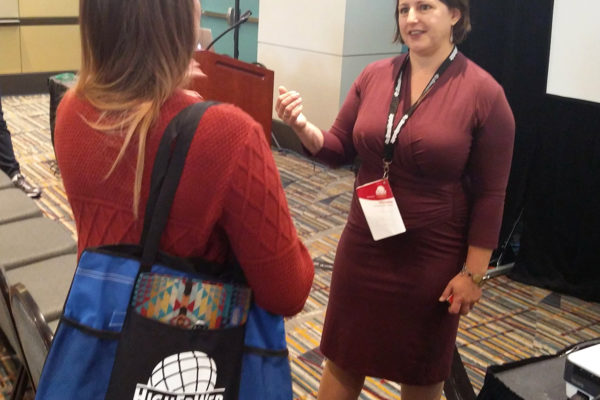Why is usability testing your website super important? We like to say it’s to better understand our users, or to fix UX trouble spots on our sites. The data it reveals can even settle internal debates of what should go where on a website. “Usability testing cuts through all the bicker when everyone has their opinion about what needs to be done,” said Victoria Merriman, Creative Director at Digital Loom, in session #COR2.
But if you’re trying to influence your director or stakeholders to greenlight usability testing, it comes down to this:
Usability testing drives conversions.
Merriman reports that she performs usability testing on nearly all their client websites and data shows that it dramatically improves site traffic to the pages that help institutions meet their goals, from new student recruitment to alumni donations.
By show of hands, nearly all the attendees in the session said they’re in charge of a website at their higher education institution, but of these same attendees almost none had a usability expert on staff. Higher education web professionals should feel empowered to DIY their own usability testing. Merriman led live exercises with attendees to demonstrate that usability testing is, in fact, way easier than you think.
[tweet https://twitter.com/jason_smith/status/917388930516963334]
Let’s do this.
Usability Testing in Four Easy Steps:
Step 1: Write your tasks. Invent a simple but plausible scenario for your testers using this formula: “You are an X in situation Y, you want to do Z” – the background, mindset, and what the user wants to accomplish. Map your tasks to important objectives relevant to your institution’s goals, and aim for about 8 to 12 tasks in a 45-minute session with one user. Avoid using jargon and exact terminology for pages or programs.
Step 2: Get testers. There is no magic number of test users. Merriman aims for about ten. “Anything is better than zero,” she says. “I encourage you to be scrappy and resourceful.” Current students, staff, faculty, and alumni make great subjects. Incentives go a long way: offer undergraduate students t-shirts, food, or gift cards. Testing can happen in-person or using conferencing apps like google hangout. And while there are test-for-pay services like usertesting.com, it’s not required.
Step 3: Watch testers perform the tasks. Write a script to explain the process to testers and ask testers to “think out loud” while they perform your tasks. A quick search reveals tons of sample scripts online. Quick and dirty version: “We’re working on a website for X. We think it needs help so that’s why we need people like you to help. For each task, try your best. It’s okay to pass if you’re stuck. The important thing to remember is that we’re not testing you, we’re testing the site. We want you to think out loud while you’re browsing.”
Step 4: Learn from their struggles (or wins). Gather metrics such as completion (done or not), time it takes, rating, and feedback. Observe the user the entire time. What did you notice? How can the task that they performed be improved?
Using these tips, session attendees paired up to test each other with one sample task. The impact was immediate and significant as attendees discussed the results.
[tweet https://twitter.com/meaghanfikes/status/917392759572574208]
When something works on your website, it’s obvious – and it’s even more obvious when content is buried or missing entirely. Users get lost, give up, or resort to a quick search – which may carry its own sketchy user experience issues.
And that’s one less lead to contribute to your bottom line.
